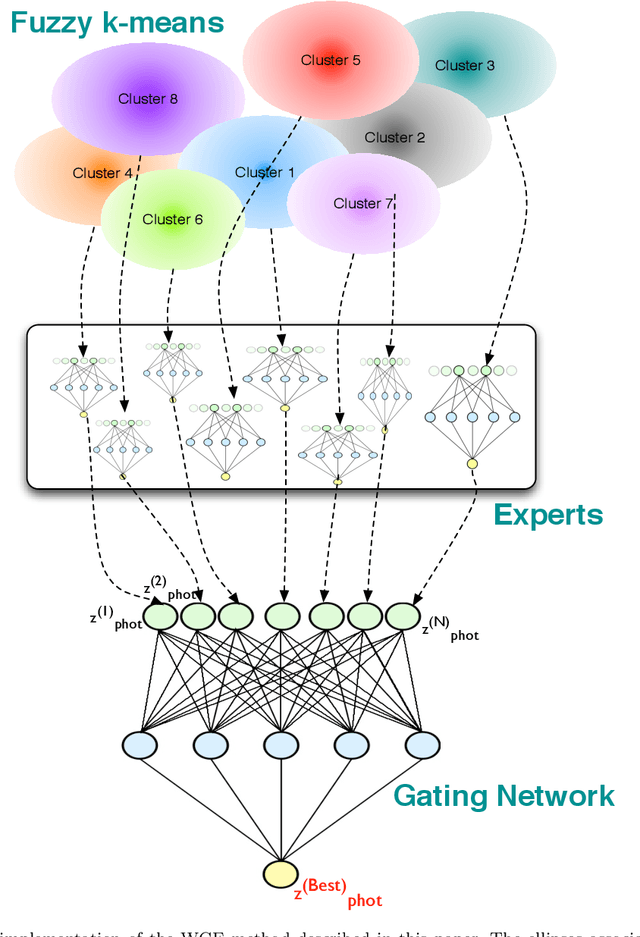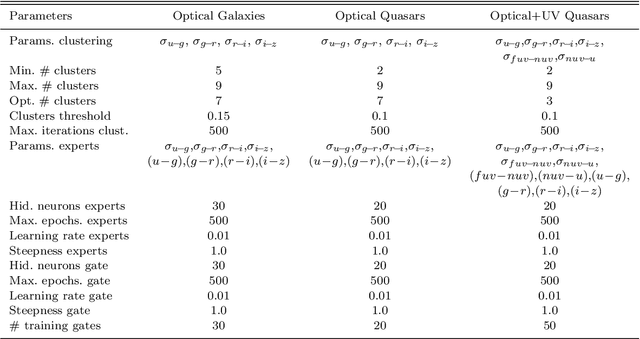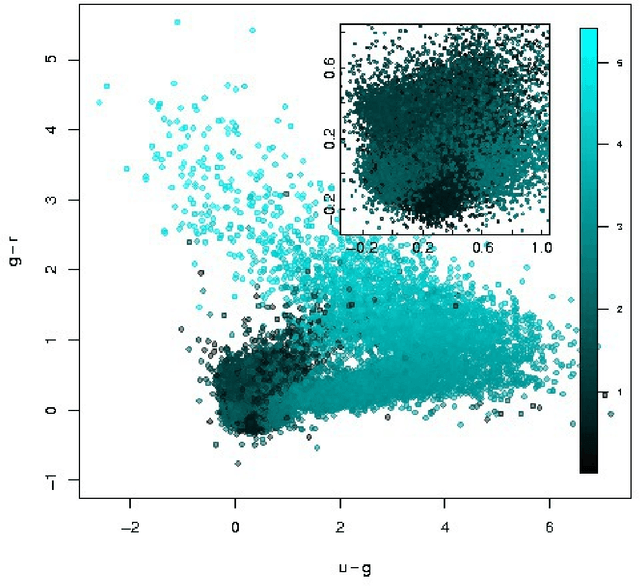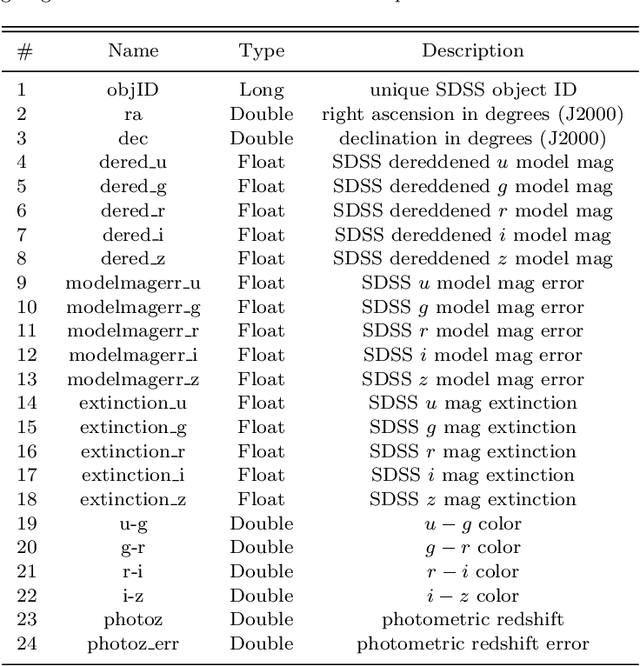Omar Laurino
Astroinformatics of galaxies and quasars: a new general method for photometric redshifts estimation
Jul 15, 2011



Abstract:With the availability of the huge amounts of data produced by current and future large multi-band photometric surveys, photometric redshifts have become a crucial tool for extragalactic astronomy and cosmology. In this paper we present a novel method, called Weak Gated Experts (WGE), which allows to derive photometric redshifts through a combination of data mining techniques. \noindent The WGE, like many other machine learning techniques, is based on the exploitation of a spectroscopic knowledge base composed by sources for which a spectroscopic value of the redshift is available. This method achieves a variance \sigma^2(\Delta z)=2.3x10^{-4} (\sigma^2(\Delta z) =0.08), where \Delta z = z_{phot} - z_{spec}) for the reconstruction of the photometric redshifts for the optical galaxies from the SDSS and for the optical quasars respectively, while the Root Mean Square (RMS) of the \Delta z variable distributions for the two experiments is respectively equal to 0.021 and 0.35. The WGE provides also a mechanism for the estimation of the accuracy of each photometric redshift. We also present and discuss the catalogs obtained for the optical SDSS galaxies, for the optical candidate quasars extracted from the DR7 SDSS photometric dataset {The sample of SDSS sources on which the accuracy of the reconstruction has been assessed is composed of bright sources, for a subset of which spectroscopic redshifts have been measured.}, and for optical SDSS candidate quasars observed by GALEX in the UV range. The WGE method exploits the new technological paradigm provided by the Virtual Observatory and the emerging field of Astroinformatics.
 Add to Chrome
Add to Chrome Add to Firefox
Add to Firefox Add to Edge
Add to Edge